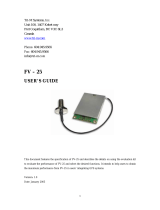
UBX-20050981 u-blox M10 ROM 5.00 Release Notes 7/8
C1-Public
6 Known limitations
• UBX-CFG-CFG support is not completely backwards-compatible. This message has a
variant in which the user does not specify which non-volatile medium they want to use
as storage device or as a source of loaded configuration. This variant does not save
configuration in flash memory.
Workaround: use the message variant that specifies the storage medium, or use the
UBX-CFG-VALSET message.
• DC-coupled TCXOs are fully supported by this firmware. From a concept point of view,
crystal oscillators are supported as well, but they have not been fully tested with this
firmware. Customers are encouraged to contact u-blox support if they intend a design
with a crystal oscillator.
• QZSS satellites are labeled incorrectly as GPS satellites in NMEA 4.10 GxGSV sentences
when “extended SV numbering” is enabled.
• Fill level indicator of data batching cannot be mapped to GPIO 5.
Workaround: Map it to another pin.
• In some situations, if Galileo is enabled along another GNSS, only few Galileo satellites
are available for the first few minutes after startup. This may result in a degradation of
positioning accuracy after startup and missed Return Link Messages (RLM).
Mitigation: Use GNSS assistance service (online or offline), use Galileo-only
configuration if RLM is the primary concern, enable BeiDou or GLONASS reception if
power budget allows.
• When configured to not use BeiDou or GLONASS (default setting), the receiver may
acquire and track imaginary GPS L1C/A signals in the absence of real signals. This may
lead to very inaccurate position output during signal outage or after a hot start if signals
are not available. The problem is present in case of a passive antenna setup and if the
internal LNA is configured to normal or low gain mode.
Workaround/mitigation: Use an active antenna setup / external LNA or enable BeiDou or
GLONASS.
• Software backup mode followed by disconnecting V_CORE (V_IO still connected) may
cause a lockup of the receiver.
Workaround: When using software backup, disconnect V_CORE and V_IO to power off
the receiver.
• When entering software backup mode, the receiver may wake up immediately, if the
UART Rx pin is enabled as a wakeup source even if no RX data has been received.
Workaround: use another wakeup source (GPIO5, EXTINT).
• If a receiver runs for ~49 days without reset, in default configuration, power
consumption may increase by a significant amount, probably around 20%.
Workaround: Perform hot start via hardware or command at a suitable time before the
49th day (but avoid “GNSS only” restarts by command).












